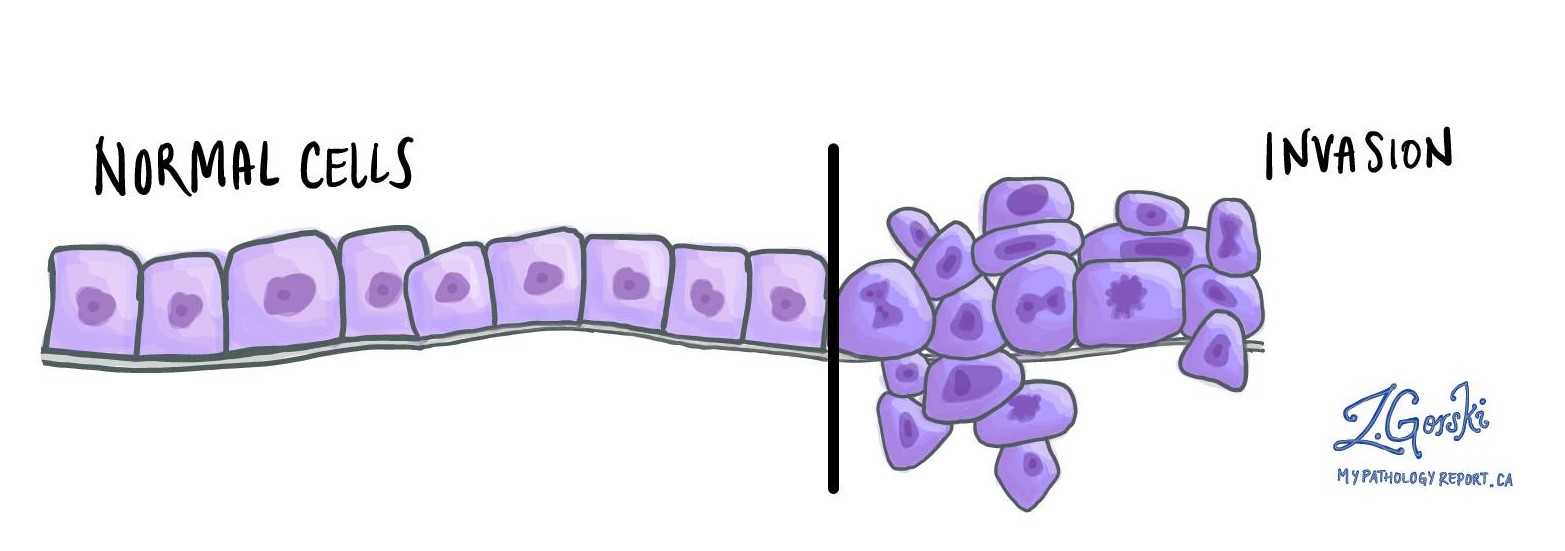
In pathology, invasion refers to the spread of cancer cells from their original location into surrounding healthy tissues. Identifying invasion is important because it allows pathologists to distinguish between malignant (cancerous) and benign (noncancerous) tumors. Malignant tumors are characterized by invasion into nearby tissues, whereas benign tumors typically remain contained within clear and well-defined borders. Recognizing invasion helps pathologists guide treatment decisions and better predict how a tumor may behave.
The term invasion is closely related to invasive and infiltrative, as all of these terms describe the same process—cancer cells extending outward into surrounding tissue. When examining tissue samples under the microscope, pathologists specifically look for evidence of invasion to determine the aggressiveness and cancerous nature of a tumor.
Does invasion mean cancer?
Yes. In a pathology report, the presence of invasion almost always indicates that the tumor is malignant or cancerous. Noncancerous tumors rarely invade surrounding tissues. Instead, they usually grow slowly and maintain clear boundaries separating them from healthy tissue.
Pathologists carefully examine tissue samples for signs of invasion, as this feature is essential in accurately identifying malignant tumors.
Why is the term invasion important?
Identifying invasion is crucial because it significantly affects how doctors plan treatment. Tumors that demonstrate invasion are typically more aggressive, harder to remove completely, and more likely to recur after treatment. The presence of invasion also increases the chance that cancer cells will metastasize (spread) to other parts of the body. Recognizing invasion early enables doctors to select effective treatment approaches, such as surgery, radiation therapy, chemotherapy, or targeted therapies. It informs decisions about how closely patients need to be monitored over time.
How is invasion different from non-invasive growth?
Invasion describes cancer cells spreading beyond their original site into surrounding healthy tissues, indicating an aggressive tumor. In contrast, non-invasive growth means the tumor cells remain confined to their original location without spreading into nearby tissues. Non-invasive tumors, such as carcinoma in situ, generally have better outcomes and are usually easier to treat completely through surgery.
Determining whether invasion is present helps doctors predict the likely behavior of the cancer, select the most effective treatments, and decide how closely a patient should be followed after treatment.



